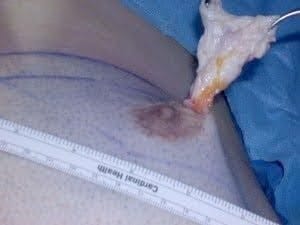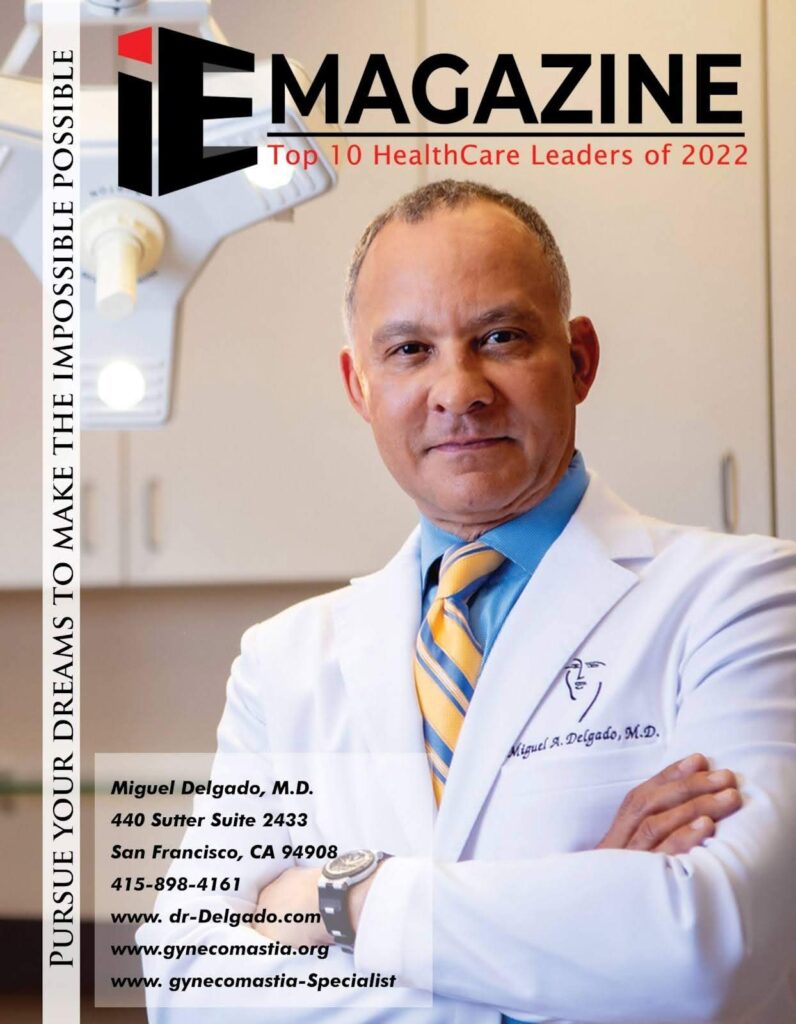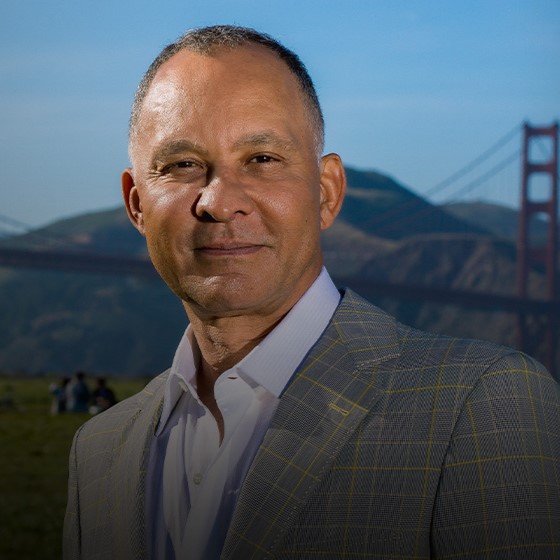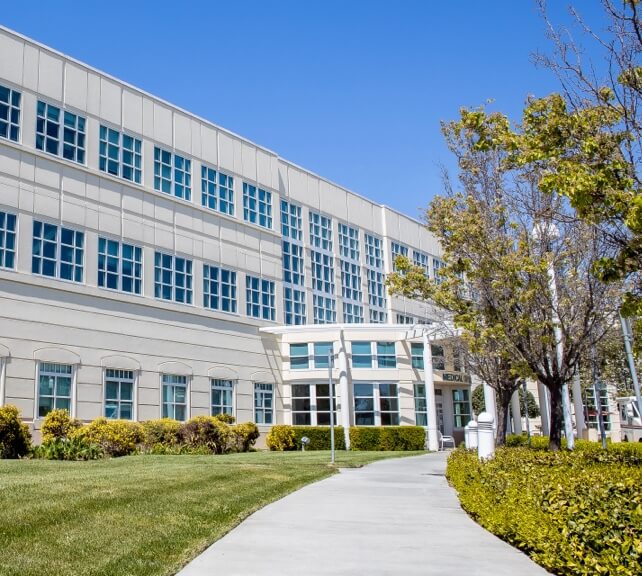Should I Wait to See if My Gynecomastia Will Go Away on Its Own?

Adolescent gynecomastia is a common condition that many young males experience due to the natural hormonal changes that occur during puberty. This condition is characterized by the enlargement of breast tissue, which can be temporary as hormone levels fluctuate. During this time, the body experiences a shift in estrogen and testosterone, leading to the development of breast tissue. This article will address the question, “As a teenage male with adolescent gynecomastia, when is the appropriate time for surgical correction?”
Key Takeaways
- Gynecomastia is common during puberty and often resolves on its own within two years as hormone levels stabilize.
- Persistent gynecomastia, affecting about 10% of young men, may require surgical intervention if symptoms continue beyond the waiting period.
- Emotional distress and body image concerns are significant considerations in managing gynecomastia, making support from healthcare providers and family crucial.
A Parental Concern: When should parents seek treatment for their son’s gynecomastia?

Should you or your child experience breast enlargement during puberty, it is generally advisable to monitor the condition for a period of time. Adolescents commonly develop gynecomastia due to hormonal fluctuations, and this form of gynecomastia often resolves within several months to two years as hormone levels stabilize. The enlargement and tenderness of the chest area can be disconcerting but are a normal part of this natural process.
It is important to keep an eye on gynecomastia throughout this phase since it typically resolves on its own without intervention. Nevertheless, there’s a small fraction—approximately 10%—of young males whose gynecomastia persists beyond the usual timeframe and might not subside independently. These cases may require surgery as a definitive solution. It is crucial to differentiate persistent or atypical gynecomastia from male breast cancer, as the latter could indicate underlying health issues that warrant further investigation.
Deciding whether to endure the waiting game or pursue treatment immediately poses challenges due to emotional distress and societal pressures related to adolescents having enlarged breasts. Assessing whether the condition naturally outweighs any psychological effects from bearing gynecomastia should be thoughtfully considered during this interim.
Although patience for natural resolution is recommended when facing pubertal gynecomastia, maintaining vigilance regarding one’s health status becomes essential if significant discomfort arises or if no reduction occurs over time. By following these thoughtful approaches and seeking professional advice, you or your child will be well-prepared to make informed decisions about managing male breast enlargement issues.
Dr. Delgado’s Advice
Dr. Miguel Delgado has extensive experience in treating adolescents with gynecomastia, having guided numerous families through this challenging period. Typically, puberty begins for most teenagers between the ages of 12 and 14, and it is during this time that gynecomastia can develop. It is advised to allow a waiting period of two years after the onset of breast enlargement to see if the condition resolves naturally.
Seeing your son go through such a challenging experience can be difficult for any parent. If your son encounters social challenges, like avoiding swimming, hesitating to take off his shirt, or withdrawing from social activities, this could indicate that his adolescent development is being impacted. The psychological burden of depression, self-shame, and loss of confidence may further the impact on normal adolescent development.
If your son is exhibiting these behaviors, it may be an appropriate time to consider discussing surgical treatment options. Dr. Delgado often involves the patient’s pediatrician and endocrinologist in the discussions.
Dealing with Adolescent Gynecomastia
Gynecomastia, especially in adolescents undergoing natural hormonal changes, often resolves without medical intervention. It’s important to recognize symptoms like swelling and tenderness, as well as the emotional difficulties that may arise due to concerns about physical appearance.
Understanding Gynecomastia

Gynecomastia is the growth of male breast tissue, a condition caused by an imbalance between estrogen and testosterone. It can occur at various life stages, including infancy, adolescence, or later adulthood. During the teenage years, about 70% of males experience some degree of breast enlargement due to natural hormonal changes. This period may also see cases of idiopathic gynecomastia, where one or both breasts become enlarged without a known cause.
The underlying reason for pubertal gynecomastia is typically a shift in the equilibrium between estrogens and androgens, which gives estrogens the upper hand, making the breast tissue more sensitive even to ordinary levels of these hormones. This hormonal imbalance leads to breast development in males, which can be influenced by conditions such as testicular tumors or other hormonal disorders.
A variety of factors can lead to this hormonal disparity, including:
- Natural fluctuations during puberty
- The aging process
- Drug-induced gynecomastia
- Ingestion of substances, such as anabolic steroids
- Overindulgence in alcohol
Individuals with gynecomastia often report a firm lump beneath the nipple area, which may be tender, along with uneven breast enlargement. It’s crucial to differentiate true gynecomastia, characterized by glandular tissue growth, from pseudogynecomastia, marked by fat deposits, for accurate diagnosis and appropriate treatment planning.
Diagnostic blood tests to assess serum levels of various hormones, including luteinizing hormone, are crucial in identifying any underlying endocrine disorders that may contribute to the condition.
To reduce the risk of developing male gynecomastia due to hormone imbalances, it is recommended to avoid potentially harmful substances, such as anabolic steroids, and limit alcohol consumption. If symptoms manifest, it’s advisable for those affected to seek medical advice to determine underlying causes and receive recommendations on monitoring strategies or therapeutic measures if necessary.
Causes of Gynecomastia
Gynecomastia is a multifaceted condition that stems from various factors, primarily an imbalance between estrogen and testosterone levels. This estrogen to testosterone ratio can be triggered by several underlying causes:
- Puberty: During puberty, hormonal surges are common, leading to temporary breast tissue growth in many adolescent boys. This type of gynecomastia often resolves on its own as hormone levels stabilize.
- Hormonal Imbalances: Conditions such as hypogonadism, Klinefelter syndrome, and testicular cancer can disrupt the balance of hormones, increasing estrogen levels and causing gynecomastia.
- Medications: Certain drugs, including anabolic steroids, can lead to gynecomastia as a side effect. These substances can alter hormone levels, promoting breast tissue development.
- Liver Disease: The liver plays a crucial role in hormone metabolism. Liver disease can impair this function, leading to hormonal imbalances that lead to gynecomastia.
- Tumors: Some tumors, particularly those affecting the testes, adrenal glands, or pituitary gland, can produce hormones that disrupt the normal balance and cause breast tissue enlargement. Breast cancer is an uncommon occurrence.
Understanding these causes can help identify the underlying reason for gynecomastia and determine the most appropriate course of action.
Symptoms and Diagnosis
The symptoms of gynecomastia can vary, but common signs include:
- Enlarged Breasts Tissue: Noticeable swelling or enlargement in one or both breasts.
- Pain or Tenderness: Discomfort or sensitivity in the breast area.
- Nipple Discharge or Tenderness: Unusual discharge from the nipples or increased sensitivity.
- Enlargement of the Areola: The dark area around the nipple may become larger.
- Skin Changes: Redness, dimpling, or other changes in the skin over the breast.
Diagnosing gynecomastia generally involves a comprehensive physical examination and a detailed review of the patient’s medical history. A physician or plastic surgeon will conduct a breast exam to identify any abnormalities. In certain cases, further diagnostic tests are required to exclude other potential conditions:
- Blood Tests: These tests can check hormone levels to identify any imbalances.
- Imaging Tests: Testicular ultrasonography or mammography can provide detailed images of the breast tissue.
- Biopsy: In rare cases, a biopsy may be performed to rule out breast cancer.
Early diagnosis and understanding of the symptoms can lead to more effective management of gynecomastia. It is also crucial to rule out male breast cancer during the diagnostic process, especially in cases that persist or are atypical.
Pubertal Gynecomastia
Pubertal gynecomastia is a common condition that affects many adolescent males during puberty. It is characterized by the enlargement of breast tissue in one or both breasts, which can be tender to the touch. Pubertal gynecomastia is usually a benign condition that resolves on its own within one to three years, but in some cases, it can persist and require medical attention.
The exact cause of pubertal gynecomastia is not fully understood, but it is thought to be related to the hormonal changes that occur during puberty. During this time, the levels of estrogen and testosterone in the body fluctuate, leading to an imbalance that can cause breast tissue to grow.
Symptoms of pubertal gynecomastia can include:
- Enlargement of breast tissue in one or both breasts
- Tenderness or soreness in the breast area
- Nipple discharge or swelling
- Breast asymmetry
In most cases, pubertal gynecomastia does not require treatment, and the condition will resolve on its own as the individual matures. However, in some cases, medical attention may be necessary to rule out other underlying conditions that may be contributing to the patient’s gynecomastia.
Natural Resolution: Is Waiting a Viable Option for Persistent Pubertal Gynecomastia?
Typically, gynecomastia resolves without intervention in both newborns and adolescents as their hormone levels find equilibrium. During puberty, it’s common for this condition to subside on its own within six months to two years. The resolution depends on how estrogen and testosterone levels even out during these pivotal growth phases.
When there are no discernible underlying causes and minimal discomfort associated with the condition, healthcare providers may opt for a watchful waiting strategy. Through consistent follow-ups with medical professionals, an adolescent’s progress can be tracked closely to address any new developments promptly. If the condition does not resolve naturally, healthcare providers may discuss various options to treat gynecomastia.
The duration of time before spontaneous resolution can prove difficult for many young individuals coping with pubertal gynecomastia due to the physical changes and psychological impact it has. Comprehending that this form of gynecomastia typically recedes naturally might offer comfort by diminishing worries about the issue.
Should persistent or severe cases cause significant distress, seeking advice from a medical professional is advisable for determining whether patience remains prudent or exploring other treatment possibilities would be more appropriate. This careful approach contributes to realistic expectations while allowing informed choices regarding handling pubertal gynecomastia.
Factors Affecting Resolution of Breast Tissue
The likelihood of gynecomastia resolving on its own depends on several factors:
- Age: Younger individuals, particularly those in puberty, are more likely to see the condition resolve naturally as their hormone levels stabilize.
- Severity: Mild cases of gynecomastia are more likely to resolve without intervention compared to severe cases.
- Underlying Cause: If the underlying cause, such as a hormonal imbalance or medication, is addressed, the condition is more likely to improve.
- Treatment: In some cases, treatment such as hormone therapy or surgery may be necessary to resolve gynecomastia.
Understanding these factors can help set realistic expectations and decide on the best course of action.
Risks of Delaying Treatment
Delaying treatment for gynecomastia can lead to several risks, including:
- Emotional Distress: The condition can cause significant emotional distress, including anxiety and depression, due to concerns about physical appearance.
- Social Isolation: Individuals may feel self-conscious and avoid social situations, leading to isolation.
- Decreased Quality of Life: Gynecomastia can interfere with daily activities and quality of life.
- Increased Risk of Breast Cancer: Although rare, untreated gynecomastia can increase the risk of developing male breast cancer. This typically occurs in males over 60 years old, but persistent or atypical cases warrant further investigation to rule out endocrine disorders or potential links to male breast cancer.
Addressing gynecomastia promptly can help mitigate these risks and improve overall well-being.
When Should You Consider Treatment?

When gynecomastia remains unimproved for more than two years, medical action may be required. The treatment of gynecomastia is often justified in cases of severe gynecomastia that results in considerable pain or psychological suffering. The ongoing symptoms and mental burden associated with enduring gynecomastia can profoundly affect an individual’s well-being, underscoring the importance of seeking assistance.
Elevated levels of anxiety and depression are common among men suffering from gynecomastia, largely due to concerns regarding their condition and possible health implications. Seeking advice from healthcare professionals can alleviate some uncertainties by providing insight into effective treatment strategies that tackle both the physical and emotional elements linked to this disorder.
Should there be no improvement after an allotted time frame, and if the breast tissue hardens, surgery might become essential. It is crucial for parents to seek professional medical guidance in a timely fashion when their offspring experience notable anguish or unease due to this affliction.
Psychological Impact of Living with Gynecomastia
Gynecomastia can have a profound impact on an individual’s sense of self-worth, often resulting in experiences of mockery. This condition is commonly associated with social anxiety among men who suffer from it, which affects their ability to interact with others and typically leads to diminished self-confidence. Doubts about sexual identity and perceived challenges to one’s masculinity may intensify these emotional struggles.
Young adults dealing with gynecomastia frequently experience social isolation as they begin to avoid social situations due to the discomfort caused by their condition. Such avoidance can lead to heightened feelings of emotional distress. In such scenarios, parental support becomes vital. Parents are encouraged to engage in candid conversations and affirm that experiencing these emotions is entirely normal during such difficult times.
It is critical for both parents and healthcare professionals alike to recognize the potential psychological pain inflicted by gynecomastia. Fostering environments where open communication flourishes alongside strong support networks has been shown effective at mitigating some mental anguish individuals face due to this medical issue.
Non-Surgical Management Options
Individuals seeking to address gynecomastia without surgical procedures have several non-invasive alternatives. Implementing lifestyle modifications, like weight reduction, might help diminish the condition if it’s attributed to surplus adipose rather than hormonal imbalances. This is called pseudogynecomastia and is most often seen in overweight males. Weight loss can significantly improve this condition.
Yet, weight loss alone may not be sufficient to completely resolve true gynecomastia since the enlargement is typically composed of both fat and glandular tissue.
Taking proactive measures to prevent the development of gynecomastia involves reviewing and potentially altering current prescription medications, as well as addressing any substance abuse issues that might contribute to the condition. It’s crucial to promote a nutritious diet and consistent exercise regimen for maintaining health during one’s teenage years.
Compression garments offer an immediate solution to mask breast enlargement by creating a smoother contour across the chest area without any surgery. In cases where gynecomastia manifests suddenly and severely, with no detectable root cause, pharmaceutical interventions, such as Tomoxifen, may also be considered treatment options. Ongoing medical evaluations can help track the evolution of gynecomastia while helping individuals cope with concerns regarding its advancement.
Surgical Treatment for Gynecomastia

When gynecomastia does not resolve or causes significant discomfort, surgical intervention might be considered. The surgical procedure for addressing male breast enlargement, known as gynecomastia surgery or male breast reduction, is suitable for both adolescents and adults. It involves the removal of surplus glandular tissue to establish a more contoured chest profile and is particularly advantageous for cases of persistent pubertal gynecomastia or severe conditions.
When excessive fatty tissue is the primary contributor to gynecomastia, known as pseudogynecomastia, liposuction techniques are utilized. This involves using a slender cannula to remove excess fat cells. When addressing the proliferation of glandular tissue or excess skin that requires removal, excision techniques are employed. These methods may involve specific incision patterns tailored to individual needs. These surgical methods can offer lasting solutions for effectively addressing gynecomastia.
Choosing surgery can provide significant advantages, including improved body contour aesthetics, enhanced self-image, and relief from any associated physical discomfort. This method emerges as a viable option, particularly after non-surgical approaches have not successfully resolved the condition naturally.
Understanding the different surgical options and their specific applications empowers individuals to make informed decisions about potential treatment paths for their condition. Consulting with an experienced surgeon provides personalized recommendations that lead to the best surgical outcomes.
Consulting a Doctor
If you are experiencing symptoms of gynecomastia, it is important to consult a doctor. A healthcare professional can help diagnose the condition and develop a personalized treatment plan. Key questions to discuss with your doctor include:
- Should I wait to see if my gynecomastia will go away on its own?
- What are the risks of delaying treatment for gynecomastia?
- What are the treatment options for gynecomastia?
- How can I manage the symptoms of gynecomastia?
Consulting a doctor can provide valuable insights and guidance, helping you manage gynecomastia effectively and improve your quality of life.
Dr. Delgado’s Expertise in Gynecomastia Surgery

For over thirty years, Dr. Miguel Delgado has specialized in gynecomastia surgery as a board-certified plastic surgeon. He is renowned for customizing surgical techniques to accommodate the distinct needs and goals of each patient, ensuring outstanding outcomes.
Dr. Delgado’s expertise goes beyond initial surgeries, as he also provides revision gynecomastia surgery for those who haven’t achieved satisfactory results from previous procedures elsewhere. Revision surgeries constitute 40% of his male breast reduction practice. His relentless commitment to exceptional care and patient satisfaction ranks him among the leading gynecomastia specialists.
Dr. Delgado is the owner of gynecomastia.org, the most extensive online forum dedicated to this topic. He has supported over 3,000 patients in exploring guidance and treatment options for gynecomastia. His deep expertise and steadfast dedication make him a highly esteemed professional in assisting those affected by this condition.
Parental Guidance: Supporting Your Son Through Adolescent Gynecomastia
Parents play a crucial role in supporting their sons as they navigate the challenges of gynecomastia. By becoming informed about treatment options and involving their son in medical consultations, they can help reduce stress and empower him.
Having ongoing dialogues with their son about his experience with gynecomastia plays a key role. It’s important that they reassure him by affirming he’s not alone and that experiencing such emotions is completely normal. This approach may relieve some psychological burden associated with this condition.
By fostering clear communication channels and offering an environment rooted in understanding, parents are pivotal in guiding their children through the complexities associated with gynecomastia while allowing them to actively participate in decisions concerning treatment possibilities.
Next Steps: Navigating Post-Diagnosis Decisions
If you have been diagnosed with gynecomastia, it is essential to understand your treatment options and make informed decisions about your care. Here are some next steps to consider:
- Understand your diagnosis: Take the time to understand the type and severity of your gynecomastia, as well as any underlying conditions that may contribute to the condition.
- Discuss treatment options: Talk to your healthcare provider about the various treatment options available, including medication, surgery, and lifestyle changes.
- Consider your goals: Think about what you hope to achieve with treatment, whether it is to reduce breast size, alleviate symptoms, or improve self-esteem.
- Weigh the risks and benefits: Carefully consider the potential risks and benefits of each treatment option, including the potential for scarring, infection, or other complications.
- Seek a second opinion: If you are unsure about your diagnosis or treatment options, consider seeking a second opinion from a specialist, such as an endocrinologist or plastic surgeon.
- Develop a treatment plan: Work with your healthcare provider to develop a personalized treatment plan that takes into account your unique needs and goals.
- Monitor your progress: Regularly monitor your progress and adjust your treatment plan as needed to ensure the best possible outcomes.
By taking the time to understand your diagnosis and treatment options, you can make informed decisions about your care and achieve the best possible outcomes.
Conclusion
Gynecomastia is a common condition that affects many males, particularly during puberty and in older age. It is characterized by the enlargement of breast tissue, which can be caused by various factors, including hormonal imbalances, certain medications, and underlying medical conditions. While gynecomastia is often a benign condition, it can cause emotional distress and low self-esteem in affected individuals.
In most cases, gynecomastia resolves on its own without treatment. However, treatment may be necessary to address underlying hormonal imbalances or medical conditions. Treatment options for gynecomastia include medication, surgery, and lifestyle changes.
It is essential for individuals with gynecomastia to seek medical attention if they experience any symptoms, such as breast tenderness, nipple discharge, or severe breast enlargement. Early diagnosis and treatment can help alleviate symptoms and improve quality of life.
In addition, individuals can take steps to prevent gynecomastia by maintaining a healthy weight, exercising regularly, and avoiding certain medications and substances that can cause hormonal imbalances. By understanding the causes and treatment options for gynecomastia, individuals can take control of their health and well-being.
In conclusion, gynecomastia is a common condition that affects many males, and it is essential to seek medical attention if symptoms persist or worsen over time. With proper treatment and lifestyle changes, individuals with gynecomastia can alleviate symptoms and improve their quality of life.
Schedule a Consultation
If you are interested in learning more about gynecomastia or a consultation, you can visit our conveniently located offices in San Francisco or Novato in Marin County. You can also schedule an in-person or virtual consultation. Call today at (415) 898-4161.
Frequently Asked Questions
How long should I wait to see if my gynecomastia will resolve naturally?
It is advisable to wait at least two years after the onset of breast tissue during puberty, as gynecomastia typically resolves naturally within that time frame.
If symptoms persist beyond this period, consultation with a healthcare provider may be necessary.
What are the signs that my gynecomastia is not resolving on its own?
If you experience persistent symptoms beyond two years, notice firmness in the glandular tissue, or suffer significant psychological distress, these may indicate your gynecomastia is not resolving on its own, and medical intervention may be necessary.
Can lifestyle changes help reduce gynecomastia?
Yes, lifestyle changes such as weight loss can help reduce gynecomastia if it is linked to excess fat.
However, these changes may not fully resolve the condition if it involves glandular tissue.
What surgical options are available for treating gynecomastia?
Surgical options for treating gynecomastia include liposuction to remove excess fatty tissue and excision techniques to address glandular tissue or excess skin. Prostate cancer patients may also consider these surgical options to manage gynecomastia induced by hormone therapy.
These procedures can effectively resolve the condition and offer lasting results.
How can parents support their sons experiencing gynecomastia?
By keeping abreast of available treatment alternatives and promoting candid dialogue, parents can offer substantial support to their sons dealing with gynecomastia.
Participation in conversations with medical professionals can also diminish stress and comfort their sons by affirming their emotions.



